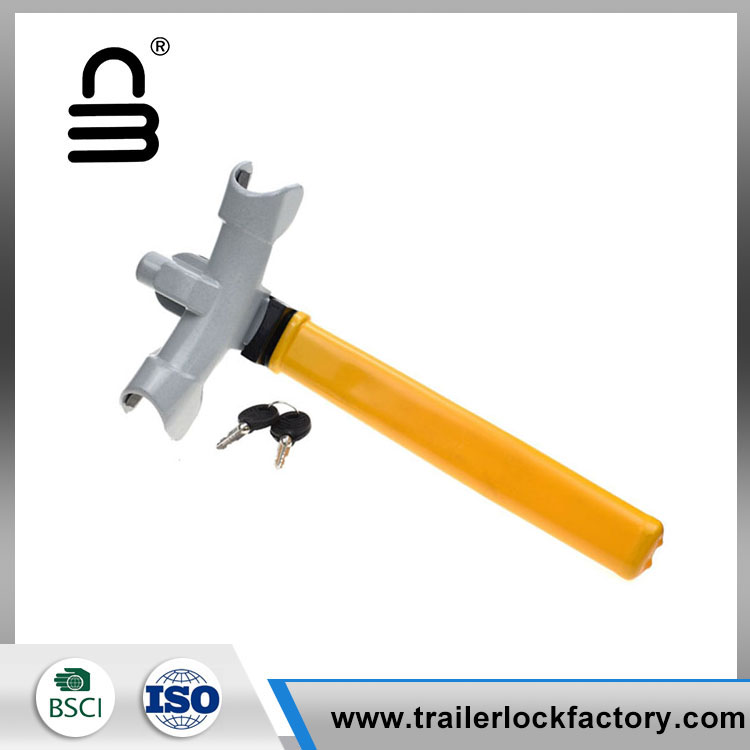How Do Steering Wheel Locks Work?
2024-03-28
Steering wheel locks, also known as steering wheel immobilizers or anti-theft locks, are devices designed to prevent unauthorized use of a vehicle by locking the steering wheel in place. Here's how they typically work:

1. Physical Barriers: Many steering wheel locks consist of a metal bar or rod that extends across the diameter of the steering wheel when engaged. This bar physically prevents the wheel from being turned, making it extremely difficult for someone to steer the vehicle.
2. Locking Mechanism: The steering wheel lock is usually activated and deactivated using a key or combination lock. When engaged, the locking mechanism secures the metal bar or rod in place, preventing it from being removed without the key or correct combination.
3. Attachment Points: Steering wheel locks often attach to the steering wheel itself and sometimes to the brake pedal or another fixed point in the vehicle. This ensures that even if a thief manages to cut through the steering wheel, they still cannot turn it without removing the lock.
4. Visual Deterrent: In addition to physically securing the steering wheel, steering wheel locks also act as a visual deterrent to potential thieves. The sight of a prominent lock on the steering wheel can discourage thieves from attempting to steal the vehicle in the first place.
5. Variety of Designs: Steering wheel locks come in various designs and levels of sophistication. Some are simple metal bars that extend across the steering wheel, while others may incorporate advanced features such as alarms or tamper-resistant materials to enhance security.
Overall, steering wheel locks are an effective and relatively inexpensive way to deter vehicle theft by preventing thieves from being able to steer the vehicle, even if they manage to bypass other security measures such as door locks or ignition systems.


